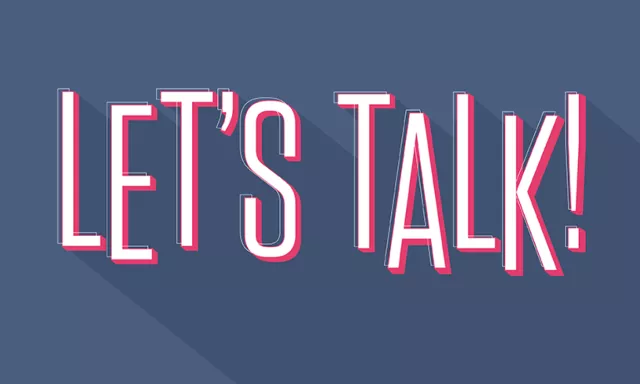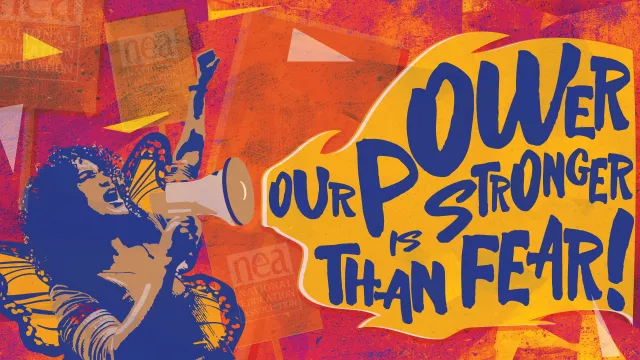Published: May 24, 2023
This resource originally appeared on NEA.org
Model Policies and FAQs
- Policy 443: Creating Welcoming and Affirming Schools for Transgender and Gender Nonconforming Students
Frederick County Public Schools, MD - Brief video describing Frederick County Public Schools’ Policy 443
- Sample School Board Resolution on Immigrant Safety (PDF)
- Template for Higher Ed Safe Zone Resolution (PDF)
Tips on Working with School Boards
Form a Team to Support the Effort and Then Expand Your Supporters
Are there students, parents, educators on your team? Good! You are ready to expand your effort into the broader community. Check and see if there are other groups working on similar issues in your community. If not, pull together a committee with representatives from different constituencies including faith-based groups, students and youth organizations, parent groups, etc. Call a first meeting to discuss the problem students are facing and why a resolution may be a solution.
Engage Your School Board, Educators and Parents
If you are unsure about where your school board stands on a particular student civil rights issue, you may want to start by surveying the board so you can assess who are your allies, swing members, and those that will pose a tough challenge. Meet with each board member and ask if they would generally support the resolution. This effort can be divided among different team members or partnering organizations. IF students are old enough to represent themselves in meetings, it’s always powerful when they share their own stories. Make sure there is a point person who is collecting the results of the meetings to report back to the group.
Gather Signatures of Support
Create a petition and disperse it widely through Facebook and other social media, at parent and educator meetings, etc. The petition should demand that the school board “get on board” and take a stand on the resolution.
Identify Board Member Allies
Identify your strongest ally (or allies) on the school board and set up a meeting with him/her to discuss introducing a resolution. Bring an education packet to share. Include talking points, newspaper articles, signed petitions, and survey data – a visual of the survey data is even better! Ask the board member(s) to take the lead in garnering the support of other board members. Ask him/her to approve the language in the draft resolution. This process may take a number of days and a fair amount of negotiating.If the board person is not willing to lead the effort to get a resolution passed, first assess the reasons why. Is it that the resolution you presented as written would prove impossible to secure his/her support? Is he/she afraid to take the lead on this issue? Depending on the reason, you may want to take some of the following paths:
Try a different member of the board.
Plan actions to target the member.
Negotiate on the draft resolution language.
Hold a Public Education Event or Town Hall Meeting
At any point in this process, you may want to consider setting up a public event in your city/district to raise awareness in the community and garner wider support for the resolution, to bring more citizen power into the effort, and to build the movement in your area. One way to involve school board members early in this effort is to set up a “town hall meeting” with a panel of people presenting the various arguments for (and against) the resolution and a panel of board members and citizens listening and asking follow-up questions.
Reach Out to the Media
The easiest way to make the resolution effort appealing to the media is to demonstrate the direct impact on the students in your district and your community.A public education event or action is a great opportunity to inform journalists about the campaign and build support to get the resolution passed. If you are not holding a public education event, consider holding a news conference featuring school board members leading the effort and diverse members of your coalition.If you don’t have board members friendly to your cause, you may want to plan media outreach around an action designed to target board members and expose their unwillingness to support parents and educators. Ideas include: holding a teach-in at a public space, holding a vigil at their home, or conducting some other creative action to garner attention for the resolution. Draft a news release and send it to your local and regional press. Don’t overlook education and parent bloggers in your area.If a resolution passes successfully, don’t forget to do follow-up media work. Hold a news conference and claim a victory for your issue and thank your supporters!
What to do When a Resolution Will Not Pass/Be Introduced
The following are some alternative options for expressing the support for your position in your school district/city:
Gauge if more internal organizing such as union meetings and informal meetings with parents and other activists (including students) might help escalate actions and the effort to pass the resolution.
If you have any allied board members, ask them to circulate a general letter in support of your position to other members.
Write a letter to the editor or an opinion piece for the local paper.
You can also try different groups in your city/district such as University Resolutions, Labor Union local resolutions, Parent and Teacher Associations, or other civic bodies.
Webinars, Videos & Art for Action
Art, videos, and webinars to empower you to engage your communities to support students’ civil rights.

Discussing Race, Racism and Other Difficult Topics With Students
NEA and Teaching Tolerance Webinar

NEA LGBTQ+ Trainings
NEA offers multiple LGBTQ+ trainings to teach educators and school personnel how to create a safe school climate for students and staff.

Share Art for Action
Art has the power to evoke emotion and deepen the impact of the movement. Explore art from NEA to use in your activism.
Use Your Educator Voice.
We are THE voice for educators in Vermont. See what membership can mean for you!

Together we're stronger. Together we're heard.
You belong in the movement! Join today to belong to the movement of educators and school staff fighting for the pay and working conditions we all deserve.
